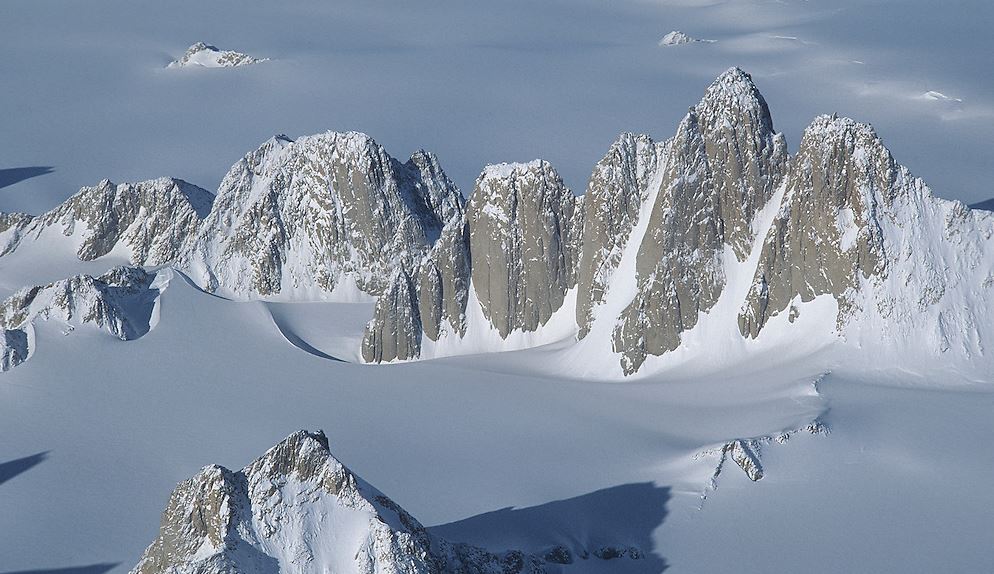Difference between revisions of "Template:POTD protected"
Westarctica (talk | contribs) |
Westarctica (talk | contribs) |
||
| Line 1: | Line 1: | ||
{| role="presentation" style="margin:0 3px 3px; width:100%; text-align:left; background-color:transparent; border-collapse: collapse; " | {| role="presentation" style="margin:0 3px 3px; width:100%; text-align:left; background-color:transparent; border-collapse: collapse; " | ||
|style="padding:0 0.9em 0 0;" | [[File: | |style="padding:0 0.9em 0 0;" | [[File:Gothic-Mountains.jpg|300px|thumb]] | ||
|style="padding:0 6px 0 0"| | |style="padding:0 6px 0 0"| | ||
The '''[[Gothic Mountains]]''' is a group of mountains, 32 kilometers (20 mi) long, in the [[Queen Maud Mountains]] of [[Westarctica]], located west of [[Watson Escarpment]] and bounded by [[Scott Glacier]], Albanus Glacier, and Griffith Glacier. | |||
The mountains were first visited in December 1934 by the [[Byrd Antarctic Expedition]] geological party led by [[Quin Blackburn]]. The name was proposed by Edmund Stump, leader of a U.S. Antarctic Research Program (USARP) - Arizona State University geological party which made investigations here in the 1980-81 season. The mountains are composed of granites which have weathered to produce a series of spires and peaks reminiscent of a Gothic cathedral. | |||
<p><small>Photographer: | On 28 April 2020, Logan Mullins was granted the [[Peerage of Westarctica|hereditary peerage]] title Duke of the Gothic Mountains in recognition of his support of Westarctica. | ||
<p><small>Photographer: Gordon Wiltsie</small></p> | |||
[[:Category:Images|'''(More Images)''']] | [[:Category:Images|'''(More Images)''']] | ||
<div class="potd-recent" style="text-align:right;"> | <div class="potd-recent" style="text-align:right;"> | ||
Revision as of 21:36, 22 June 2023
|
The Gothic Mountains is a group of mountains, 32 kilometers (20 mi) long, in the Queen Maud Mountains of Westarctica, located west of Watson Escarpment and bounded by Scott Glacier, Albanus Glacier, and Griffith Glacier. The mountains were first visited in December 1934 by the Byrd Antarctic Expedition geological party led by Quin Blackburn. The name was proposed by Edmund Stump, leader of a U.S. Antarctic Research Program (USARP) - Arizona State University geological party which made investigations here in the 1980-81 season. The mountains are composed of granites which have weathered to produce a series of spires and peaks reminiscent of a Gothic cathedral. On 28 April 2020, Logan Mullins was granted the hereditary peerage title Duke of the Gothic Mountains in recognition of his support of Westarctica. Photographer: Gordon Wiltsie |
